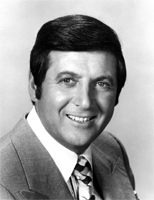Monty Hall Problem | ||
| ||
Introduction | ||
In this section of MATHguide, you will learn about the classic Monty Hall problem. These topics will be presented here:
|
 Monty Hall was the original host of a game show called, Let's Make a Deal. It started in 1963 and spanned for several decades. Obviously, it was a very popular show. Monty Hall was the original host of a game show called, Let's Make a Deal. It started in 1963 and spanned for several decades. Obviously, it was a very popular show.
The game show was and still is known for audience members dressing in strange costumes, peculiar wagers, and prizes for mundane objects.
| |
The Monty Hall problem is well known to this day among game show watchers and those who dabble in probability. Here is a quick explanation of the problem: Monty would present a contestant with three doors. Behind one of the three doors was a great prize, like a beautiful sports car, a tall stack of cash, or an expensive vacation. Behind the other two doors were bad prizes, called 'zonks.' Zonks could be goats, a grown man dressed as a baby, or some other bad prize.
Once a contestant chose a door, Monty revealed a zonk behind one of the unchosen doors. He would then ask the contestant if he or she wanted to stick with the original choice or choose the other unopened door. The question around this scenario is, "Is there an advantage with staying with the original choice, changing to the other unopened door, or is there no advantage either way one chooses?"
This problem captured the interest of several well-known thinkers, some of which were incorrect about the mathematics!
| |
This problem involves a detailed explanation. Watch this video to learn about the mathematics that definitively settles the question surrounding the Monty Hall problem.
| |
Try our instructional videos to help learn this material.
| |
Try these lessons, which are closely related to the lesson above.
| |

 ideo:
ideo:  esson:
esson: